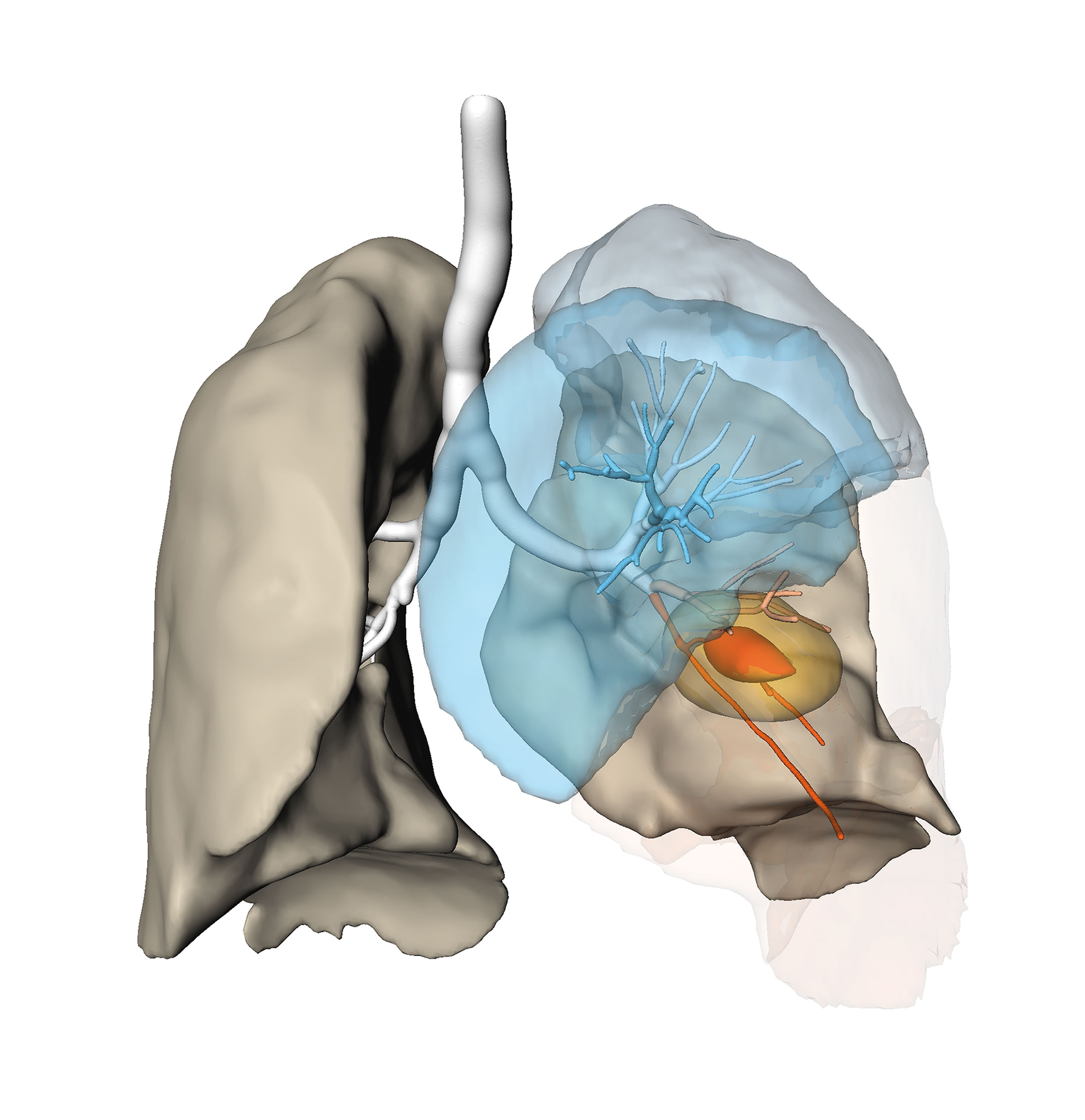Clinical Challenges
Lung cancer is the most common cause of cancer-related death. For lung tumors in critical position or in patients with large emphysema, using only computed tomography data to decide on an appropriate intervention can be difficult. Furthermore, for the increasing number of both small and early-stage lung tumor cases, clinicians must determine whether tumor resection is feasible by parenchyma-saving segmentectomy. Fraunhofer MEVIS offers a variety of CT-based analysis, quantification, and visualization methods to support thoracic surgeons. These focus on visualization for central tumors [1], emphysema quantification [2], risk analysis for segmentectomies [3, 4, 5], and metastases visualization.
Solutions & Features
Visualization:
- Lung lobes and lung segments
- Bronchial tree and lung vessels
- Tumors and metastases
- Lymph nodes
- Mediastinal vessels
Quantification:
- Lobe- and segment-specific lung parenchyma and emphysema quantification
- Lesion volumes and lesion diameters
- Distance between tumor and segment boundaries
- Distance between tumor and bronchial tree branchings
Highlights
Several of our software tools and demonstrators aid thoracic surgical planning:
- Visualization of anatomical structures (Explorer)
- Lobe-specific parenchyma and emphysema quantification (MeVisPulmo3D)
- Risk analysis for segmentectomies (SegmentResectionAnalyzer)
References
[1] Limmer S et al. Chirurg 2010
[2] Kuhnigk JM et al. Radiographics 2005
[3] Stoecker C et al. CURAC 2015
 Fraunhofer Institute for Digital Medicine MEVIS
Fraunhofer Institute for Digital Medicine MEVIS
